#African-American Books
Explore tagged Tumblr posts
Text
Potentially hot take, but I actually think it's really important for white witches and pagans to learn about black and brown spiritual practices (from practitioners of those traditions choosing to talk about what they're comfortable sharing with outsiders) not in a "I'm going to learn hoodoo!" kind of way but in a "these conversations are how we kill harmful stereotypes and learn how to be a good ally" kind of way.
#brought to you by me buying a new book on african american folkways today#witchcraft#witch#witchblr#pagan#paganism#paganblr#inclusive witchcraft#inclusive paganism#inclusive heathenry#mine
370 notes
·
View notes
Text
Hey !!!!!
If you’re a African-American Hoodoo practitioner, please do not get these three books, as they are written by white people who are doing digital blackface.
Hoodoo is a closed African-American spirituality practice that only African-Americans can practice. We do not have a lot of resources or books written by African-Americans so I will try to provide all the books that I use by actual African-Americans.
It’s upsetting that I find a book about Hoodoo thats written by a white person or a non-African-American person. I don’t like that.
Some African American Hoodoo authors I suggest are:
Stephanie Rose Bird
Monique Joiner Siedlak
and Tayannah Lee Mcquillar
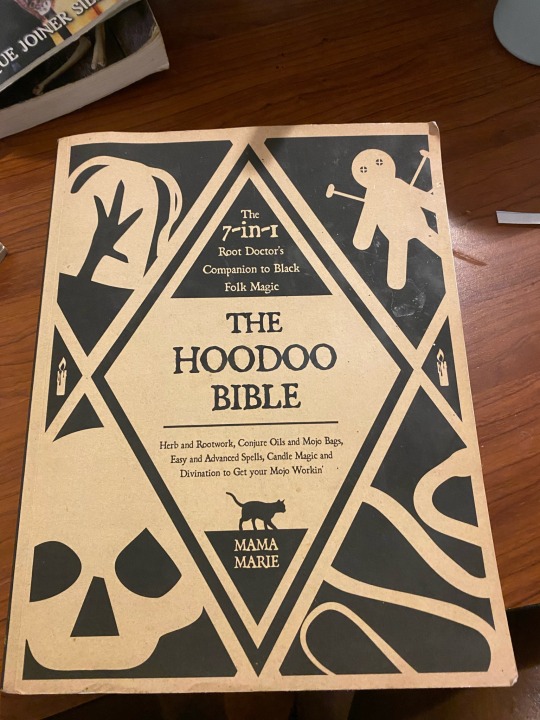
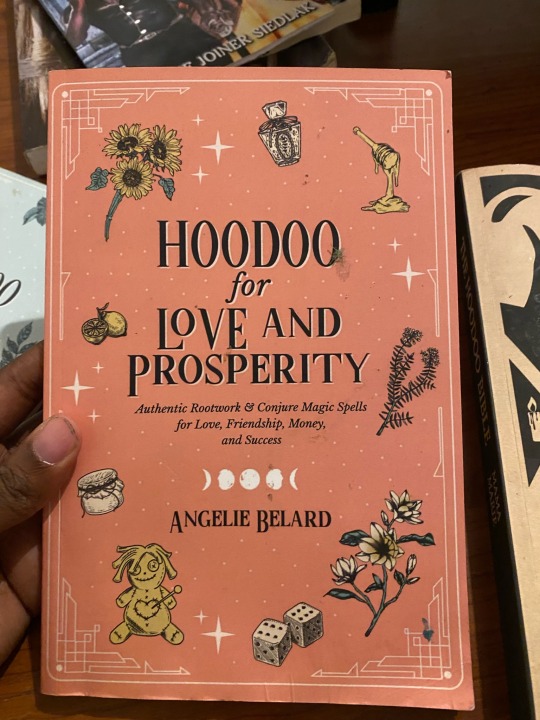

#hoodoo#hoodoo book collection#hoodoobooklist#hoodooheritagemonth#hoodoo practitioner#hoodoo information#hoodoobooks#African American#aa#african american spirituality#rootwork#boost#viral#black spirituality#trending#soulaan#souls and#african american culture
758 notes
·
View notes
Text
Hoodoo, Rootwork and Conjure sources by Black Authors
Because you should only ever be learning your ancestral ways from kinfolk. Here's a compilation of some books, videos and podcast episodes I recommend reading and listening to, on customs, traditions, folk tales, songs, spirits and history. As always, use your own critical thinking and spiritual discernment when approaching these sources as with any others.
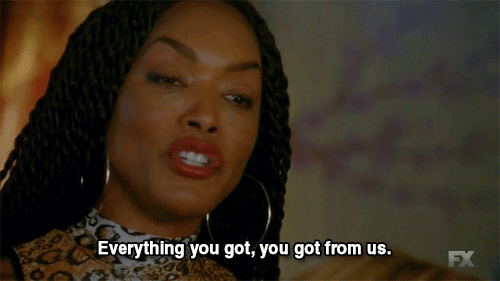
Hoodoo in America by Zora Neale Hurston (1931)
Mules and Men by Zora Neale Hurston (1936)
Tell my horse by Zora Neale Hurston (1938)
Let Nobody Turn Us Around: An African American Anthology by Manning Marable and Leith Mullings, editors (2003)
Black Magic: Religion and the African American Conjuring Tradition by Yvonne P. Chireau (2006)
African American Folk Healing by Stephanie Mitchem (2007)
Hoodoo Medicine: Gullah Herbal Remedies by Faith Mitchell (2011)
Mojo Workin': The Old African American Hoodoo System by Katrina Hazzard-Donald (2012)
Rootwork: Using the Folk Magick of Black America for Love, Money and Success by Tayannah Lee McQuillar (2012)
Talking to the Dead: Religion, Music, and Lived Memory among Gullah/Geechee Women by LeRhonda S. Manigault-Bryant (2014)
Working the Roots: Over 400 Years Of Traditional African American Healing by Michele Elizabeth Lee (2017)
Barracoon: The Story of the Last "Black Cargo" by Zora Neale Hurston (2018)
Jambalaya: The Natural Woman's Book of Personal Charms and Practical Rituals by Luisa Teish (2021)
African American Herbalism: A Practical Guide to Healing Plants and Folk Traditions by Lucretia VanDyke (2022)
youtube
youtube
youtube
youtube
These are just some suggestions but there's many many more!! This is by no means a complete list.
I recommend to avoid authors who downplay the importance of black history or straight out deny how blackness is central to hoodoo. The magic, power and ashé is in the culture and bloodline. You can't separate it from the people. I also recommend avoiding or at the very least taking with a huge grain of salt authors with ties to known appropriators and marketeers, and anyone who propagates revisionist history or rather denies historical facts and spreads harmful conspiracy theories. Sadly, that includes some black authors, particularly those who learnt from, and even praise, white appropriators undermining hoodoo and other african and african diasporic traditions. Be careful who you get your information from. Keeping things traditional means honoring real history and truth.
Let me also give you a last but very important reminder: the best teachings you'll ever get are going to come from the mouths of your own blood. Not a book or anything on the internet. They may choose to put certain people and things in your path to help you or point you in the right direction, but each lineage is different and you have to honor your own. Talk to your family members, to the Elders in your community, learn your genealogy, divine before moving forwards, talk to your dead, acknowledge your people and they'll acknowledge you and guide you to where you need to be.
May this be of service and may your ancestors and spirits bless you and yours 🕯️💀
#hoodoo#conjure#rootwork#black hoodoo authors#Youtube#hoodoo books#african american conjure#african american history#black history#black folklore#african american folklore#black magic#african american magic#witches of color#ATRs#Spotify
1K notes
·
View notes
Photo

"SZA, Muslim Women Are Everything" by Fahmida Azim on INPRNT
#art#print#illustration#artist#fahmida azim#space#books#book#badass#musician#rapper#black woman#muslim#african american#black women#inspiring#black girl magic#songwriter#sza#badass women#muslim women are everything#seema yasmin#harpercollins#harper design#harper#inprnt
557 notes
·
View notes
Text














Anti-literacy laws in many slave states before and during the American Civil War affected slaves, freedmen, and in some cases all people of color. Some laws arose from concerns that literate slaves could forge the documents required to escape to a free state. According to William M. Banks, "Many slaves who learned to write did indeed achieve freedom by this method. The wanted posters for runaways often mentioned whether the escapee could write." Anti-literacy laws also arose from fears of slave insurrection, particularly around the time of abolitionist David Walker's 1829 publication of Appeal to the Colored Citizens of the World, which openly advocated rebellion, and Nat Turner's Rebellion of 1831.
The United States is the only country known to have had anti-literacy laws.


Significant anti-African laws include:
1829, Georgia: Prohibited teaching Africans to read, punished by fine and imprisonment
1830, Louisiana, North Carolina: passes law punishing anyone teaching Africans to read with fines, imprisonment or floggings
1832, Alabama and Virginia: Prohibited Europeans from teaching Africans to read or write, punished by fines and floggings
1833, Georgia: Prohibited Africans from working in reading or writing jobs (via an employment law), and prohibited teaching Africans, punished by fines and whippings (via an anti-literacy law)
1847, Missouri: Prohibited assembling or teaching slaves to read or write
Mississippi state law required a white person to serve up to a year in prison as "penalty for teaching a slave to read."
A 19th-century Virginia law specified: "[E]very assemblage of negroes for the purpose of instruction in reading or writing, or in the night time for any purpose, shall be an unlawful assembly. Any justice may issue his warrant to any office or other person, requiring him to enter any place where such assemblage may be, and seize any negro therein; and he, or any other justice, may order such negro to be punished with stripes."
In North Carolina, African people who disobeyed the law were sentenced to whipping while whites received a fine, jail time, or both.
AME Bishop William Henry Heard remembered from his enslaved childhood in Georgia that any slave caught writing "suffered the penalty of having his forefinger cut from his right hand." Other formerly enslaved people had similar memories of disfigurement and severe punishments for reading and writing.
Arkansas, Kentucky, and Tennessee were the only three slave states that did not enact a legal prohibition on educating slaves.
It is estimated that only 5% to 10% of enslaved African Americans became literate, to some degree, before the American Civil War

#afrakan#african#kemetic dreams#brownskin#afrakans#african culture#africans#brown skin#afrakan spirituality#anti literacy#media literacy#financial literacy#digital literacy#information literacy#early literacy#ban books#ban#united states#united states of america#geopolitics#america#usa#politics#slavery#prison abolition#abolition#american history#african american history#civil rights
96 notes
·
View notes
Text

A tour de force. Culling from a dazzling array of archival materials, Owens traces the beginning of modern American childhood. She carefully peels back the layers, revealing the prominent place of Black children in the construction of white manhood and American humanism... Weaving together theory and history, Like Children is rich, dynamic, timely, and moving.
#uwlibraries#history books#african american history#history of childhood#american history#19th century
35 notes
·
View notes
Text




(Not So) Steamy Saturday
"The times had brought changes to Whitebridge. Could Jane Weaver, R.N., take up her old life and duties. . . ?"
"'Jane, I'd like you to meet Dr. Boyd Daves. . . .' It took all of Jane's poise to cover her surprise. For the handsome man smiling politely at her from behind the wheel was black."
"A new black doctor had introduced the racial question . . . and Jane found not the threads of her old life but a new challenge to her heart."
Of the 500+ nurse romance novels from the 1940s to the early 1970s in our collection, it is rare to find one with African American main characters, let alone having them depicted on the cover, and even rarer are interracial relationships. In our collection, the nurse romances that do were all published after Civil Rights legislation of the mid-1960s. Such is the case this pulp novel, Homecoming Nurse by Rose Dana (one of the many pseudonyms for prolific pulp-fiction writer W.E.D. Ross, 1912-1995), published in New York by Lancer Books in 1968.
With the novel showcasing many of the social taboos of the time -- divorce, a small New England town forced to come to terms with contemporary racial issues, racially-exclusive country clubs, interracial relationships, mental illness, the village ice queen chasing after a married man -- we thought it would have the makings of a fairly steamy plot. But, alas, its narrative is plodding and pedestrian with barely a wisp of steam. Disappointing. To its credit, however, with the entire town fretting over the potential of miscegenation, the story does culminate in an interracial engagement (between the main character Jane's friend Maggie and Dr. Boyd, not Jane herself). Getting there, however, is tedious and about as exciting as an ice cream parlor on a sleepy New England main street.
View other nurse romance novels.
View other pulp fiction posts.
#Steamy Saturday#pulp fiction#nurses#nurse romances#nurse romance fiction#nurse romance novels#romance novels#romance fiction#pulp novels#Rose Dana#New England Nurse#Lancer Books#African Americans#interracial relationships#W.E.D. Ross#William E. Daniel Ross
32 notes
·
View notes
Photo
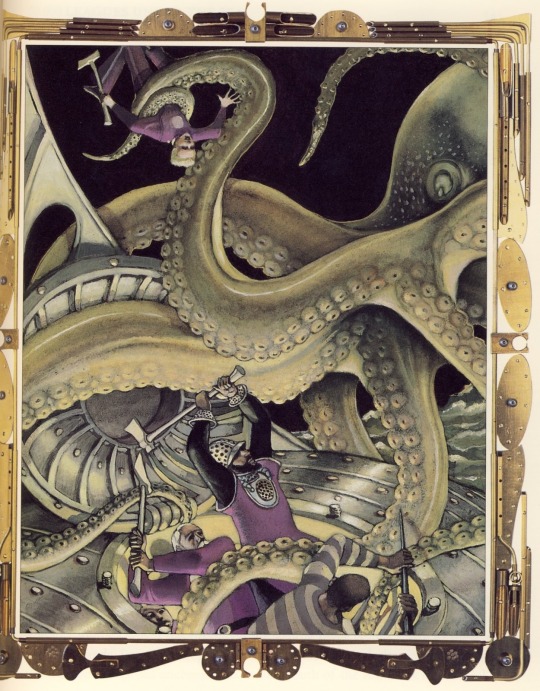
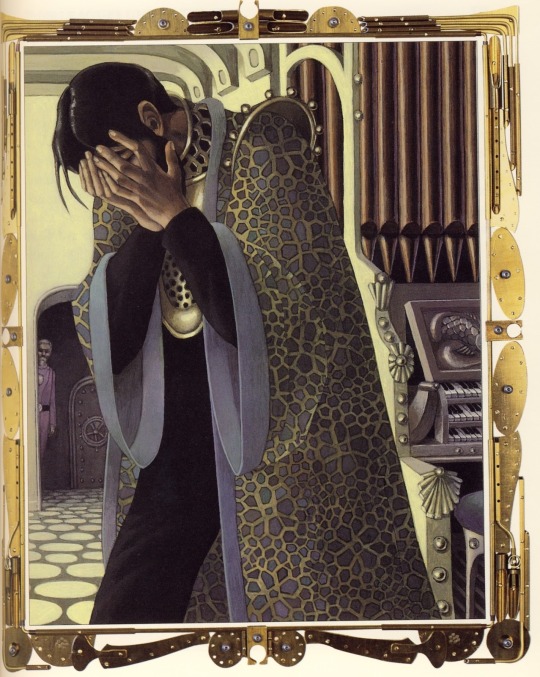

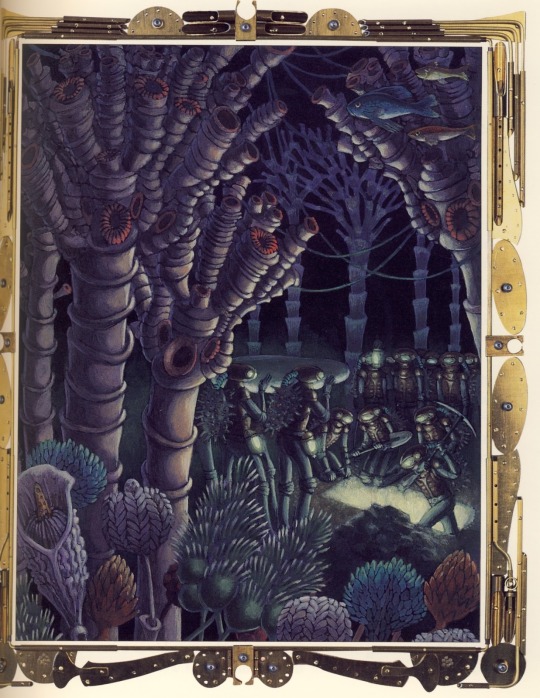
Jules Verne’s 20,000 Leagues Under the Sea illustrated by Leo and Diane Dillon, 2000.
#leo and diane dillon#jules verne#sci fi illustration#sci fi art#american art#african american art#book illustration#fantasy illustration#sea monsters#steampunk art#american illustration#art#illustration#my post
441 notes
·
View notes
Text

starting a new journal (!!) on this lovely december morning, and dipping in and out of this gayl jones’s butter.
#studyblr#study#booklr#reading#litblr#books#literature#journal#reading aesthetic#light academia#writeblr#writing#african american literature#poc studyblr#commonplace#journaling#fountain pen
73 notes
·
View notes
Text
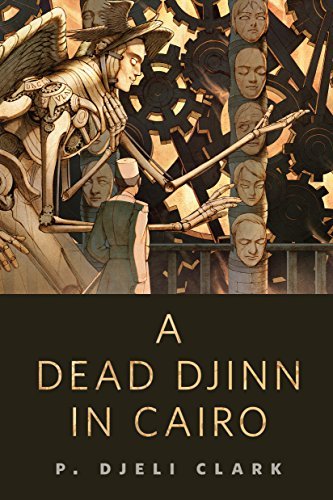
#short stories#short story#a dead djinn in cairo#phenderson djèlí clark#p. djèlí clark#p djèlí clark#dexter gabriel#21st century literature#american literature#african american literature#black literature#english language literature#have you read this short fiction?#book polls#completed polls
71 notes
·
View notes
Text

Moon Girl spares no expense on her gadgets or being an amazing role model!💜
👩🏾🦱🦖
#history#moon girl#devil dinosaur#marvel#comic book history#mark paniccia#brandon montclare#natacha bustos#amy reeder#black history#female characters#comic books#girl power#moon girl and devil dinosaur#black girl magic#womens history#marvel comics#grl pwr#black characters#role model#moon girl magic#african american history#1970s#2010s#marvel characters#nickys facts
19 notes
·
View notes
Text
To all New Orleanian African American 'Percy Jackson' (2005) franchise fans, I have a serious question:
Please vote!! I've felt very confused for the past half a year coz of this issue.
#alex is confused#percy jackson franchise#percy jackson and the olympians (2023)#percy jackson and the olympians (2005)#the heroes of olympus (2010)#the trials of apollo (2016)#the trials of apollo#the heroes of olympus#percy jackson and the olympians#pjo tv show#pjo tv series#pjo t.v. series#pjo book series#pjo books#pjo#hoo#toa#trials of apollo#heroes of olympus#percy jackson & the olympians#pjo hoo toa#toa hazel#hoo hazel#pjo hazel#hazel#hazel levesque#new orleanian#african american#fictional character#black character
24 notes
·
View notes
Text
I think it pisses God off if you walk by the color purple in a field somewhere and don't notice it.
Alice Walker, The Color Purple
#Alice Walker#The Color Purple#purple#fields#nature#nature walk#scenery#landscape#African American literature#BIPOC author#LGBTQ literature#quotes#quotes blog#literary quotes#literature quotes#literature#book quotes#books#words#text
24 notes
·
View notes
Text
-
#Seeing the dune part 2 american centric red carpet and as a devoted aficionado of the books and yk a moroccan person here are my 2 cents#Dune was one of the few Western works inspired by MENA culture that that felt genuine and respectful#But ofc despite the profound symbiosis with Middle Eastern and North African culture evident within the pages of the novels#the movie adaptation lack of substantive representation from these communities both in on-screen portrayals and within production roles was#very much disappointing in part 1 and i doubt there are any change now#While drawing inspiration from the Amazigh peoples of Algeria and Morocco#the film barely skims the surface of its MENA influences leaving substantial potential untapped#Herbert openly acknowledged the profound impact of Islam and MENA culture on his noveIs#from the metaphorical representation of Spice as oil#to the allegorical parallels drawn between the occupation of Arrakis and real-world MENA geopolitics#By marginalizing Arabs from the narrative fabric of Dune the essence of the story is being undermined particularly its anti-colonial core#the irony of this is kiIIing me because this was a direct resuIt of us impérialism on the middIe east#But the reality is that Dune is an American production tailored for an American audience so it makes sense for it to be what it is now#a big production running from its original essence#What adds to my disappointment is the fact that I liked Villeneuve's adaptation of Incendies and I had what you call foolish hope hfhg#Dune feIt Iike a squandered opportunity to authentically depict the cultural milieu that inspired it#Given the narrative's inherent anti-colonial themes#the omission of Arab and North African voices dilute its message if any of it is even left#without representation from Arabs and Amazigh people the cultural essence becomes another appropriated resource watered down to an aestheti#rather than serving as a critique of the destructive actions of colonialists seeking power and dominance#the narrative becomes susceptible to distortion and co-option by the very entities it was intended to condemn and hold accountable
39 notes
·
View notes
Text
Writing Tip #1: never underestimate the power of ugliness
Never underestimate the power of ugliness.
Uglying up your prose can be just as powerful as prettying it up.
Using words like bleeding, vomiting, to describe basic actions like water running out of a faucet can add a sense of violence or agony to a scene:
"Plunging his hands into the ice cold water vomiting from the sink..."
"Plunging his hands into the ice cold water bleeding from the sink..."
Using very ugly imagery to describe normal things can also work well in tandem with using prettied up (especially when it's exaggeratedly so) imagery for ugly things.
"Plunging his hands into the ice cold water vomiting from the sink, he wipes the last delicate dribbles of golden bile from his lower lip"
#writing#ugly#ugliness#the power of ugliness#writing tips#writing advice#tips#writeblr#bookblr#books and reading#reading and writing#authors#black Hispanic authors#black writers#black authors#latina authors#latina writers#female writers#hispanic authors#leyelle#my writing#african american writers#teen authors
39 notes
·
View notes
Text

"Fascinating and deeply researched, The Famous Lady Lovers offers us new ways of discussing Black intimate life, urban society and culture, and women's long-standing struggle for freedom. The public and private narratives in this book are certain to transform our understanding of queer and Black women's histories. A must read."
74 notes
·
View notes